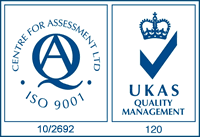British Standards in the Tile Industry
In common with many established industries there are bewildering array of standards that are used to ensure quality and standards of tiles.
The main standard for tiles is known as BS EN 1411.
The BS EN 1422 standard defined many different tests, most optional which can be carried out on ceramic tiles. These include the following, which refer to another BS standard test.
Tile testing methods
- - BS EN ISO 10545-1 Sampling and acceptance criteria for ceramic tiles
- - BS EN ISO 10545-2 Determination of the dimensional and surface quality characteristics for ceramic tiles
- - BS EN ISO 10545-3 Determination of water absorption for ceramic tiles - useful for swimming pool tiles
- - BS EN ISO 10545-4 Determination of tensile strength and resistance to bending for ceramic tiles
- - BS EN ISO 10545-5 Determination of resistance to collision for ceramic tiles
- - BS EN ISO 10545-6 Determination of resistance to deep abrasion (for non glazed tiles)
- - BS EN ISO 10545-7 Determination of resistance to superficial abrasion (for glazed tiles)
- - BS EN ISO 10545-8 Determination of thermal linear expansion for ceramic tiles
- - BS EN ISO 10545-9 Determination of resistance to sudden thermal changes for ceramic tiles
- - BS EN ISO 10545-10 Determination of expansion caused by humidity for ceramic tiles
- - BS EN ISO 10545-11 Determination of resistance to crackling (for glazed tiles)
- - BS EN ISO 10545-12 Determination of resistance to frost for ceramic tiles
- - BS EN ISO 10545-13 Determination of resistance to chemical attacks for ceramic tiles
- - BS EN ISO 10545-14 Determination of resistance to stains for ceramic tiles
- - BS EN ISO 10545-15 Determination of lead and cadmium transfer (for glazed tiles)
- - BS EN ISO 10545-16 Determination of slight chromatic differences for ceramic tiles
The above tests are well defined and agreed upon within the industry. But for testing the slip resistance there is less agreement on testing method and a variety are used. Slip resistance is important for anti-slip tiles.
- BS 7976 - Pendulum method
- DIN 51097 Method - Slipping angle with bare feet (A, B, and C groups) In this, group A is extruded tiles, group B is dry pressed tiles and Group C is for tiles moulded through another process.
- DIN 51130 Method - Slipping angle wearing shoes. This is testing with standard shoes and oil (R9 to R13 groups)
- ASTM C1028 - Static friction coefficient. This involves testing with dry and wet Ornstein
Published on 09/04/2011














